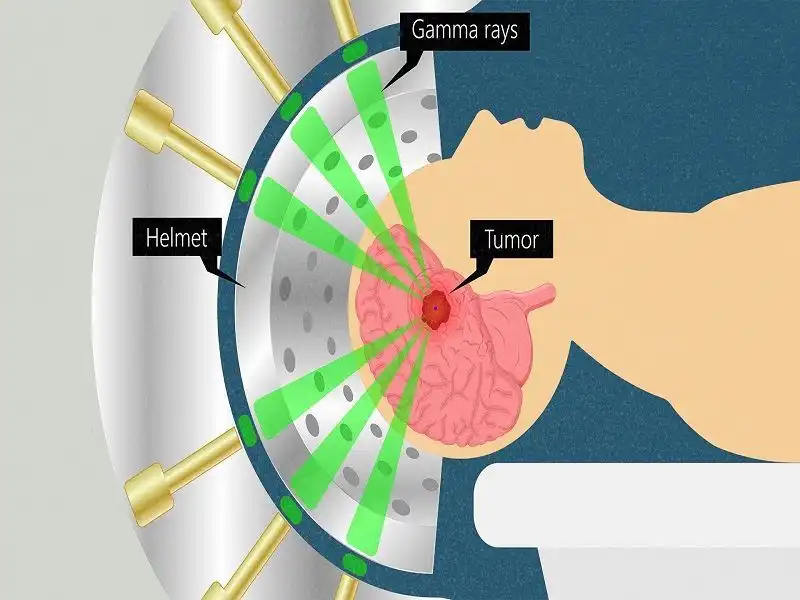Overview
Gamma Knife is applied using a technique called "stereotactic radiosurgery" and ensures that the coordinated diseased brain tissue is destroyed with gamma rays.
Thanks to this system, gamma rays from 192 globally located and separate sources are transferred onto the diseased brain tissue and this tissue is removed.
First of all, the stereotactic frame is fixed on the patient's head in order to create the necessary coordinates for the treatment and to prevent movement during the procedure.
This is vital so that the treatment can be carried out correctly and that the radiation is delivered exactly where it is needed. By applying the stereotactic frame to the patient, the exact location of the tumor is determined, and the patient is kept in the required position inside the device.
During this procedure, local anesthesia is applied to the areas where the frame is placed on the head so that the frame does not cause pain, while the patient feels a pressure. After the image of the diseased area is taken, the necessary dose planning is made, and then radiation therapy is started.
After each beam is given to the right place for the required time, the frame on the patient's head is removed and then monitored in the ward. Thanks to high technology, nowadays, patients can be treated with the mask method without wearing a frame on their heads.
However, it is the specialist physicians who decide which patient will be treated with the frame method and which with the mask method.
What are the advantages of Gamma Knife therapy?
This treatment does not require surgery and patients do not require a surgical incision. In particular, the treatment of tumors in the brain is done without opening the skull. After the treatment, patients can return to their normal daily life and work life one day later.
This method makes it possible to treat patients who cannot undergo open surgery. The fact that the hospital stay is extremely short, there is no need for intensive care, and the patient's ability to return to work immediately reduces health-related costs.
How long does radiation therapy take?
The preparation process before the Gamma Knife operation can take approximately 1.5-2 hours. The duration of the patient's stay in the machine may take an average of 1.5-2 hours, depending on the size of the lesion.
After the procedure, the patient is given an analgesic by adding a serum, and he is usually discharged on the same day. The possibility of treatment by wearing a mask instead of the frame attached to the head of the patients in the treatment also provides easier access to tumors that press on the optic nerve.
In which diseases is it used more?
Brain metastases are the most common diseases in which this method is used. It is also used in the treatment of 'meningiomas', which originate not from the brain itself, but from the cerebral cortex, grow over time and mostly damage the brain tissue.
Although these are benign tumors, they need to be treated as they can damage the brain tissue. Apart from this, it is also used in the treatment of trigeminal neuralgia, which causes very severe facial pain, and acoustic neuroma, which can cause hearing and balance loss.
Tumors that originate from the auditory and balance nerves in the brain and are generally benign are called acoustic neuromas. Lesions less than 3.5 cm are especially suitable for the Gamma Knife method.
Although open surgical methods are primarily preferred in pituitary adenomas, radiation therapy is also used to reduce the risk of recurrence of the disease.
